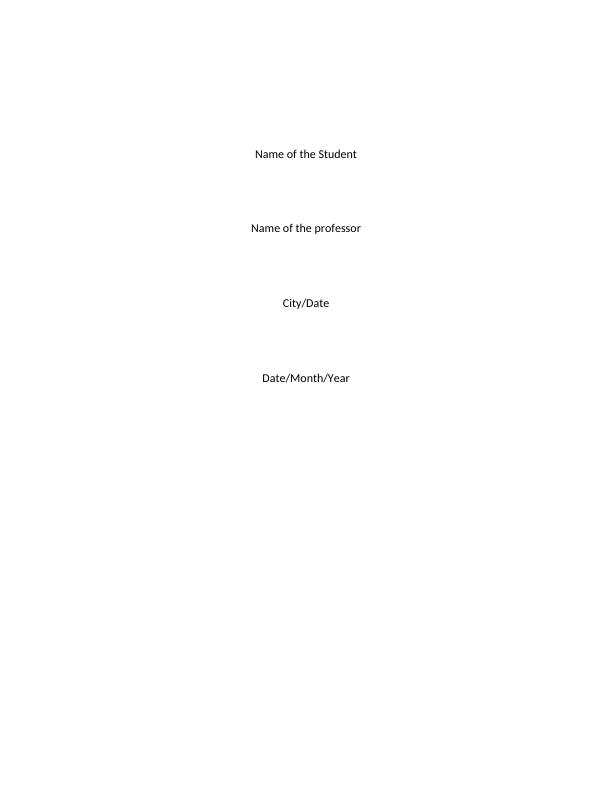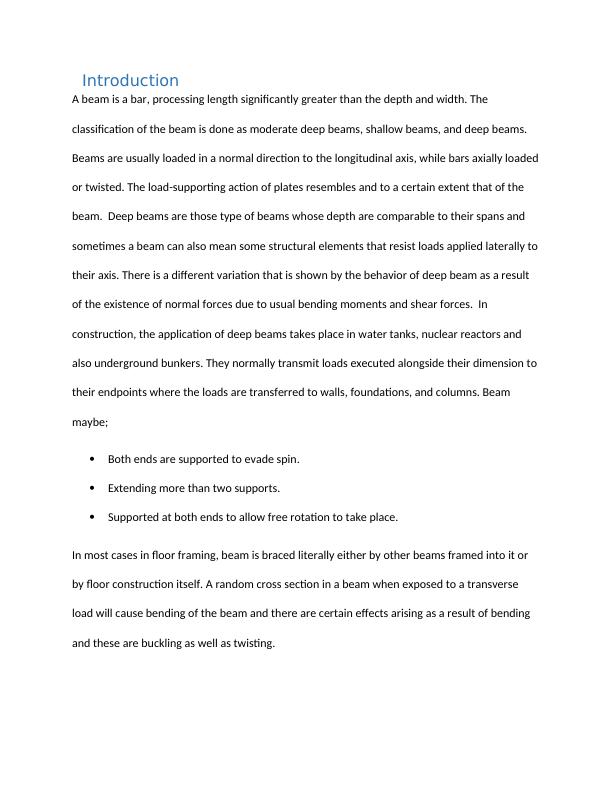Understanding Beams: Behavior, Failure Modes, Stresses, and Types Used in Construction
Write a 2500 word paper on the behaviour of deep beams, including failure modes, examples of constructions using deep beams, and at least ten references (no internet websites).
13 Pages2852 Words300 Views
Added on 2023-06-04
About This Document
The classification of external forces acting on a member can be done as body forces and surface forces. The division shear failure mode can also be divided into various sub-divisions which include; Shear compression stress where the development of diagonal crack into the compressive zone can cause the RC beam to fail, compressive failure or shear proper of struts which are realized in beams having small shear span to depth ratio and diagonal tension failure which entails the thrust line becoming very eccentric giving rise to flexural failure in the compressive zone.
Understanding Beams: Behavior, Failure Modes, Stresses, and Types Used in Construction
Write a 2500 word paper on the behaviour of deep beams, including failure modes, examples of constructions using deep beams, and at least ten references (no internet websites).
Added on 2023-06-04
ShareRelated Documents
End of preview
Want to access all the pages? Upload your documents or become a member.
Euler-Bernoulli Beam Theory in a Simply Supported Beam without Reinforcement
|12
|2463
|60
Two way RC Slab Design.
|15
|461
|454
Trusses vs. Beams: Analysis and Design
|30
|6718
|130
Earthquake Design/Management Systems
|6
|1065
|343
Report on Machanics of Solid
|18
|3398
|85
Behavior and Failure Mechanism of Modern and Ancient Arches
|11
|2810
|338




